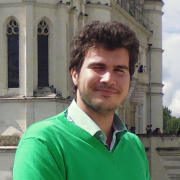Earthquake in central Italy, 1-year aftermath
Report by Francesco Corea, Neurologist/Stroke Physician at San Giovanni Battista Hospital, Foligno, Italy
In the autumn 2016, starting on August 24th, the internal valleys of the Appenines mountains in the counties of L’Aquila, Ascoli, Macerata, Perugia and Rieti were affected by earthquakes magnitude 6.0 on the Richter scale and above. New earthquakes in the area of the Sibillini Mountains, between Umbria and Marche have followed on October 26th and 30th.
Authorities reported that the 299 people died (10% foreign citizens from different nationalities), while 238 people were rescued by debris. 388 injured were hospitalized. At least 65 000 temporarily lost their homes or were displaced. Damage to residential houses, public buildings, businesses, communication ways and cultural assets in the area was huge.
In addition to the high number of injured people, four hospitals were seriously damaged by the earthquakes and immediately evacuated (Amatrice, Amandola, Cascia, Norcia) and another dozen had facilities temporarily out of order. Main roads were closed due to rocks and debris, making any transport difficult. Hundreds of hospitalized patients were transferred to safer areas. Patients with severe injuries were transported by helicopter.
The pictures and video document a visit one year after the first earthquakes in the Cascia municipality of Perugia county, Umbria. We followed an aid mission undertaken 12 months ago by ESO members. German sponsors provided a teleambulance similar to the STEMO units of Berlin, general ultrasound devices, EKG, and mini lab machine to be brought to the region. All was on site within a few days after the earthquakes. This was possible thanks to the coordination of Albrecht Gunther, a neurologist and ESO member, and the support of the German Red Cross, Jena University Hospital and MEYTEC.
This earthquake area aid mission demonstrated how telemedicine might be a feasible resource for disasters in isolated areas with an infrastructural crash of electricity, phone lines and reduced mobility on main roads.
Many in the region make their livelihood from tourism, which has been majorly affected. Government support on the long term rebuilding seems the only boost for many rural communities. The quiet valley is slowly returning to normality, and the landscape is good reason for many to visit for a weekend, for others to stay for a lifetime.
Francesco Corea, FESO, reports that two out of five hospitals in the Southeastern Umbria area still closed. The recruitment in trials such as ENCHANTED and TICH 2 was stopped.
Nevertheless stroke care quality is still improving, with an increase of 200% in the number of thrombolysis in the main hospital. The first thrombectomy was also recently performed in this area.
Video: https://www.youtube.com/watch?time_continue=2&v=r_Kp9lv0fUs




